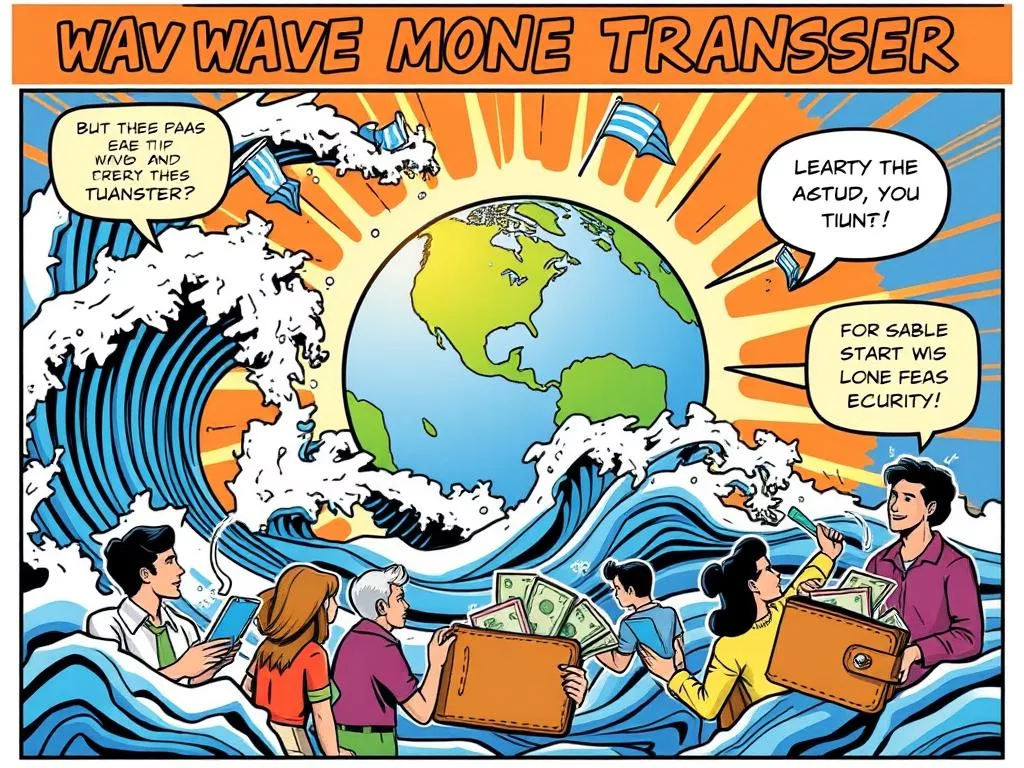The global economy is getting more connected, leading to a big need for good international money transfer services. Wave Money Transfer is a big name in this field, helping send money to many countries. It has over 500,000 active users and has moved $10 billion through its app. This shows it’s popular and reliable.
It also has approval from the Financial Conduct Authority (FCA) in the UK and other global bodies. This makes it even more trustworthy.
Wave Money Transfer focuses on making things easy for users. It’s clear about fees, so users know what they’re paying without surprises. It has a great 4.6-star rating on Trustpilot from thousands of happy users.
But, it’s not perfect. Some users have trouble getting help when they need it. This international money transfer review will look at both the good and bad sides of Wave Money Transfer. It will help you decide if it’s the right choice for you.
The Pros and Cons of Using Wave Money Transfer
Wave Money Transfer has both good and bad sides for users. Knowing the pros and cons helps you choose the best way to send money.
Advantages of Wave Money Transfer:
- Agility: Wave is easy to use and fast, like sending a text. Users like getting updates on their money transfers.
- Cost-Effectiveness: Wave has clear rates and no hidden fees. It’s great for saving money on transfers.
- Accessibility: It lets you send money to many countries, mainly in Africa and Asia. This helps users in these areas.
- Security: Wave uses strong encryption to keep your money safe. It’s a secure way to send money.
Disadvantages of Wave Money Transfer:
- It only works in 11 African countries. This might limit options for some users.
- New users have limits on how much they can send. This can be a problem for big transfers.
- Even without fees, the exchange rates might not be the best. This can affect how much money you get.

Customer Reviews: People generally like Wave Money Transfer. It has a 4.4 out of 5 rating on Capterra from 1,600 reviews. It also has a 4.8 out of 5 on G2 from 15 reviews. These ratings show it’s effective and users are happy.
It’s important to know both the good and bad of Wave Money Transfer. If you’re looking for other options, there are many resources. They compare global transfer services, like this one.
Key Features of Wave Money Transfer
Wave Money Transfer shines in the international money transfer scene. It offers features that make sending money easy and safe. Knowing what Wave Money Transfer can do helps users decide if it’s right for them.
Cross-Platform Compatibility: You can use Wave Money Transfer on your phone. This makes it easy to manage your money, no matter where you are.
Multiple Transfer Options: You can send money to bank accounts, mobile wallets, or for cash pickup in many countries. This variety meets different needs and preferences.
Real-Time Tracking: The app gives you updates on your money as it moves. This keeps you informed and builds trust in the service.
24/7 Support: A team is ready to help you anytime. While there’s room for improvement, the support is a big plus.
Transaction Limits: You can send up to $999/£999 a day and $2,999/£2,500 a month to the Philippines. With a government ID, you can send more, up to $12,000/£10,000 a month.
Cash Pickup Requirements: In the Philippines, cash pickup requires ID like a passport or driver’s license. The cash pickup limit can be as high as PHP 500,000, depending on the service.

Affordability: Wave Money Transfer has low fees and competitive exchange rates. It doesn’t take credit cards or PayPal, which helps keep costs down.
Security Features: The app is highly secure, earning top marks for safety and reliability. This is key for those worried about their financial safety.
Wave Money Transfer offers easy-to-use features, many payment options, and good prices. It’s a top choice for sending money across borders.
Review of Wave Money Transfer for Transferring Money Internationally
Wave Money Transfer is becoming more popular for sending money abroad. Its mobile app has helped move over $10 billion, helping nearly 500,000 users. People like how easy it is to use and how fast the money gets there, even to places like Kenya and Ghana.
But, there are big problems with customer support and how reliable it is. Even with a 4.6-star rating on Trustpilot, many say it’s slow and hard to get help. They’re unhappy with trying to fix payment issues, showing that while sending money is easy, getting help is not.
Compared to Wise and Remitly, Wave might not be the best for rates and support. As the world of sending money abroad changes, it’s smart to look at other options. Check out this guide on the best international money transfer for more choices. Wave has its good points, but for those sending money often, it’s worth looking at other services too.
